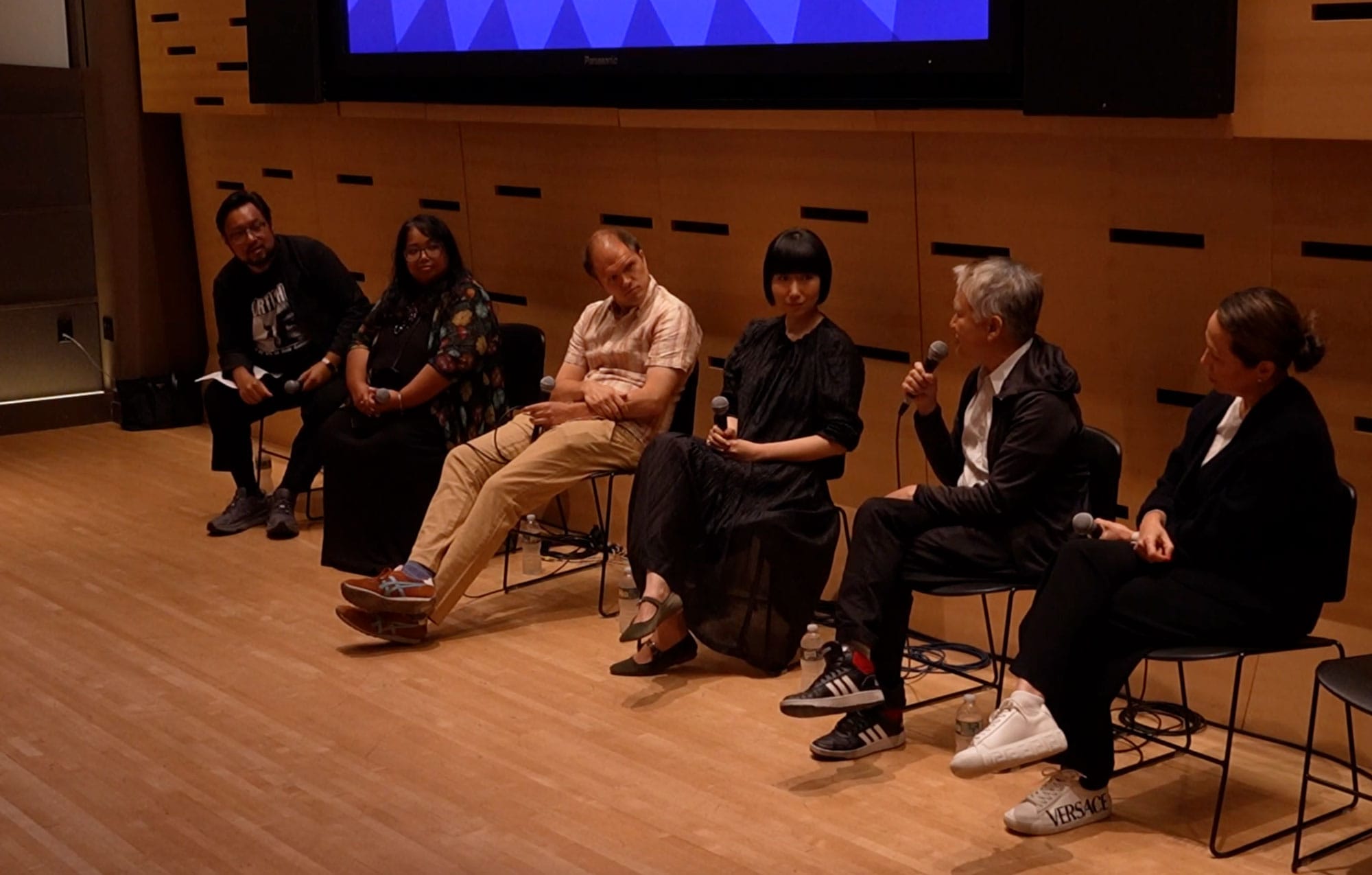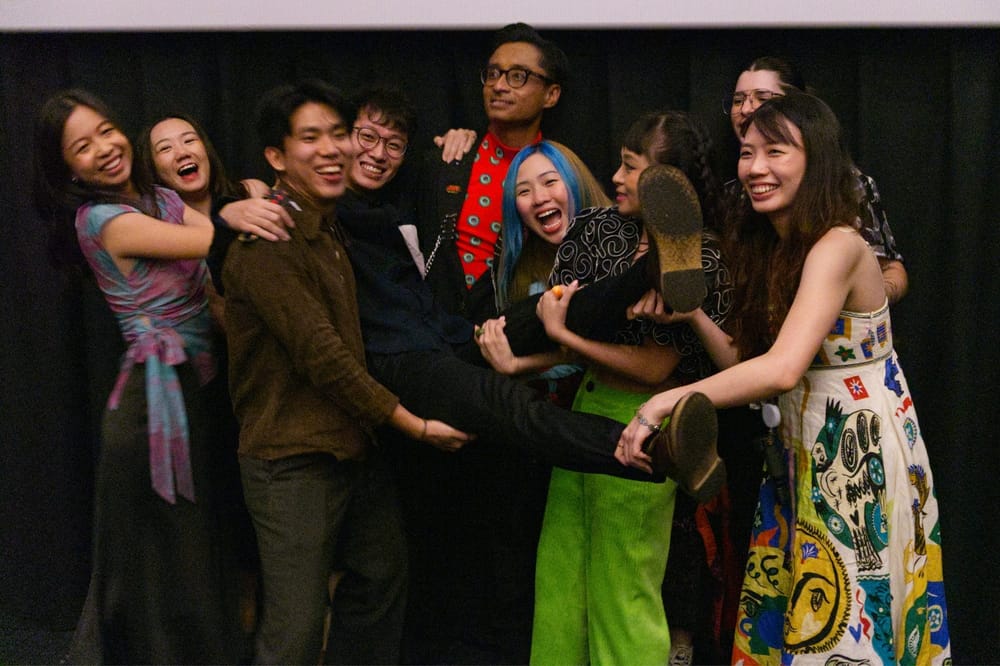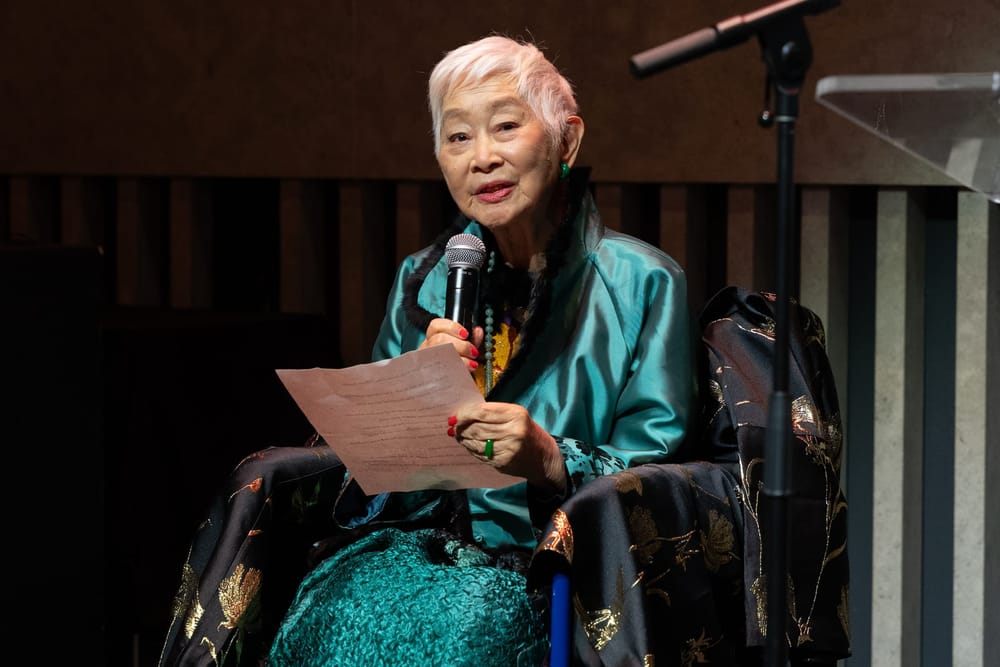By Dennis Clemente
Asian films in the US are facing a unique set of challenges and opportunities. While interest in Asian content continues to grow, the number of theaters for independent films are declining, leaving film buyers to sigh in disbelief, “Honey, I Shrunk the Theatrical Window.”
Much like the Hollywood comedy where the shrunken kids overcome some challenges on their journey back to their normal size, Asian film distributors are exploring new terrains to reach their audience, particularly with the onslaught of streaming platforms and their impact on the traditional theatrical experience.
This issue was front and center on July 14 at the New York Asian Film Festival in Film at Lincoln Center. A distinguished panel of industry experts deeply involved in the distribution of Asian films came together to discuss “Asian Cinema's American Odyssey: State of the Distribution of Asian Films in the US.”
Led by Andersen Le, artistic director of the Hawaii International Film Festival, the panel featured Doris Pfardrescher of Well Go USA; Marcus Hu of Strand Releasing; Aliza Ma of The Criterion Channel; Tom Sveen of The Cinema Guild, and Jessica del Mundo of Golden TV. This discussion offered an insightful exploration of the current state and future prospects of Asian film distribution.
Current Challenges in Distribution
Le: We’re at a juncture where theatrical distribution has been shrinking, with the advent of streaming services like Netflix causing significant shifts. The question is whether physical media and theaters still hold relevance for Asian films in this changing landscape.
Hu: The biggest challenge today is getting coverage for films. It used to be guaranteed that a New York Times or Los Angeles Times review would give a film gravitas. But now, with so many films being produced and limited bandwidth for coverage, it's harder to get those crucial reviews. With fewer theaters, especially art house venues, it has become difficult to get films seen by wide audiences. San Francisco, for example, used to have 15 art house outlets, but now we're down to just two.
Pfardrescher: For us at Well Go USA, we’ve also seen that streaming platforms like Netflix have changed the game, particularly for Korean films. With so much Korean content on Netflix, it’s hard to draw those audiences back into theaters. Even with big hits like “The Roundup,” Korean diaspora audiences now prefer to watch from home, which impacts theatrical distribution.
Hu: Exactly, and it’s not just about theaters closing down. With physical media, DVD sales have been a major revenue source for many years. But now, even that market is shrinking. The shift towards streaming and fast consumption has really altered how we think about longevity and sustainability for Asian films.
Distribution Models for Asian Films
Le: Let’s discuss how distribution strategies have evolved. With fewer traditional outlets, are you using new models for releasing Asian films?
Hu: For Strand Releasing, we still do platform releases. We start in key markets like Los Angeles and New York and expand depending on the film’s performance. It’s a more cautious approach. We still release about 12 to 14 films a year, but only a few get wide theatrical releases.
Pfardrescher: At Well Go USA, we take a different approach depending on the audience. For art house films, we also do platform releases, starting in major cities and expanding. But for more commercial Asian films, particularly targeting diaspora audiences, we go big right away. With films like “Ip Man” or “Train to Busan,” we launch on 150 screens or more, because those films have a built-in fan base that we can tap into quickly.
Aliza Ma: At Criterion, we take a different angle by focusing on curating films that have staying power. Our programming is built around fostering long-term relationships with our audience, rather than relying on quick turnarounds. We don’t just want films to be available—we want to build communities around them.
The Role of Film Festivals
Le: Film festivals have long been critical for launching art house and Asian films. Have festivals become more important now that theatrical outlets are shrinking?
Sveen: Festivals are extremely important for us. Almost all of the films we acquire come from major festivals like Cannes or Berlin. They provide a great launchpad, allowing us to gauge audience reactions and build buzz. Festivals are where films like “Burning” or “The Wailing” generate their initial momentum before expanding into other markets.
Pfardrescher: Exactly. We use festivals as a way to build a film’s reputation before it hits the US market. With films like “Monster,” we rely on the credibility and excitement generated at these events to help us expand to wider audiences. For diaspora films, festivals also help bridge the gap between Asia and the US, as many in the diaspora keep up with what’s happening in the home territory through festival news.
Hu: Festivals are even more crucial now, not just for critical support but for connecting with niche audiences. A film may have a strong showing at festivals, and that can carry it through a limited theatrical release before moving to streaming or physical media.
Targeting Niche Audiences and Expanding the Reach
Le: Asian films often straddle multiple audiences—diaspora communities, genre fans, and art house lovers. How do you manage marketing and distribution across these groups?
Pfardrescher: A film like “The Assassin” is a perfect example. It appeals to the diaspora audience, the arthouse audience, and martial arts fans. We target each group separately. For the diaspora audience, we rely heavily on the marketing done in the home territory, as those audiences are often following what’s happening in Asia. For the fanboy martial arts audience, we use the networks we’ve built from previous releases like “Ip Man.” The most challenging part is always the art house crowd, which requires careful festival placement and critical reviews to build credibility.
Expanding Distribution through New Media and Streaming
Le: Jessica, I know your background is different from the rest of the panel. Could you talk about Golden Media’s approach and how you’re bridging gaps between Asian and Asian American creators?
Del Mundo: I’m with Golden Media, which is based in Los Angeles. We’re the parent company of a few media properties, including Chime TV, an Asian American English-language cable channel, and Golden TV, our new streaming service. We’re really interested in creating collaborations between Asian and Asian American creators, particularly in streaming. We just came back from Singapore and the Philippines, where there’s a strong interest in co-productions, bringing Southeast Asian creators together with US-based talent.
At Golden Media, we’re focused on expanding the reach of Asian content beyond just Asian American audiences. For example, Chime TV is available on Charter Spectrum, and it’s not just Asian households tuning in—especially in the Midwest, where we’ve seen non-Asian viewers engaging with our content. Streaming has opened up new avenues for us, and we're seeing that people outside the community are curious about Asian culture, whether it's through K-dramas or Filipino cinema.
Le: It’s interesting how much crossover there is now, especially with films like “RRR” or shows on Netflix. I’ve noticed a lot of non-Asian audiences embracing Asian content. I went to an “RRR” screening, and it was amazing to see how many white fanboys were there.
Del Mundo: Exactly! We’re seeing a lot of curiosity from non-Asian viewers as well. It’s their first exposure to Asian culture, and they’re embracing it. It’s a great opportunity to expand our reach, especially through streaming services like Golden TV. We’re trying to develop more originals that speak to both the Asian and the broader American experience.
Exploring New Avenues: FAST Channels and Physical Media
Le: Let’s talk about the role of physical media and new forms of distribution like FAST (Free Ad-Supported Television) channels. Are these viable long-term strategies?
Pfardrescher: We’ve seen a resurgence in physical media, particularly among collectors. Criterion, for example, does well with its curated editions. At Well Go USA, we’ve embraced FAST channels. It’s a great way to showcase older catalog titles like martial arts films on platforms like Roku, where viewers can tune in for free, supported by ads. It’s a way to monetize films that might otherwise sit dormant.
Le: FAST channels are definitely a trend we’re seeing across the industry. It’s a way to exploit deep libraries while reaching new audiences who might stumble across a film they wouldn’t have otherwise watched.
Fanbases, Niche Markets, and Long-Term Prospects
Le: Fanbases are crucial to the longevity of Asian films, especially with streaming and social media. How do you develop and sustain fan engagement?
Ma: It’s all about passion and community-building. At Criterion, we’re constantly engaging with fans through social media, curated lists, and events. It’s not just about getting people to watch a film, but about creating a conversation around it. Fans today are interested in discovery, in finding films that challenge them. Letterboxd, for example, is an amazing platform where fans can engage deeply with film culture.
Pfardrescher: For us, it’s about keeping films alive for years, not just during their initial release. While commercial films might burn brightly and then disappear, a great film like “Burning” has long legs and can generate revenue over time, especially through streaming and physical media.
Hu: Exactly. With streaming platforms like The Criterion Channel, there’s an opportunity to expose audiences to films they might have missed, even if those films didn’t get a major theatrical push initially. It’s all about maintaining visibility and engagement over time.
The Future of Asian Film Distribution
Le: As we wrap up, what are the biggest challenges and opportunities you see in the future for Asian film distribution?
Pfardrescher: The challenge is balancing the different markets—diaspora audiences, genre fans, and art house lovers—while keeping up with changing technologies. We need to be nimble and make sure we're tapping into all available platforms, whether that’s streaming, theatrical releases, or FAST channels. It’s about building the right marketing strategy for each film.
Hu: I agree. One of the biggest concerns is the shrinking theatrical space, especially for art house films. We’ve lost so many theaters, but at the same time, streaming has created more opportunities. The challenge is how to stand out in an overcrowded market. Festivals will continue to be important, but it’s crucial that we also find new ways to get films in front of audiences, whether through creative marketing or collaborations with platforms like Criterion.
Ma: From a curatorial standpoint, the opportunity lies in creating long-term relationships with audiences. People are hungry for discovery, and they want to engage with films on a deeper level. The challenge is figuring out how to maintain that engagement, not just when the film is released, but over time. Platforms like the Criterion Channel are great for keeping films in the conversation, but it’s about building that fanbase from the start.
Del Mundo: I think there’s a huge opportunity in co-productions between Asian and Asian American filmmakers, especially as we see more crossover appeal from non-Asian audiences. The streaming landscape allows us to reach these audiences in ways that weren’t possible before. Our challenge is to continue telling authentic stories while making sure they resonate with broader audiences. The global appetite for Asian content is growing, and it’s a great time to capitalize on that.
Sveen: For us, the focus remains on leveraging film festivals to launch films. But beyond that, we need to look at how we can extend a film's life. Physical media, streaming, and international markets are all important, but we need to continue evolving our distribution models to meet the demands of modern audiences. The challenge is doing all of this while maintaining the artistic integrity of the films we distribute.
Le wrapped up the discussion by thanking the panelists for their insights and how they see both challenges and exciting opportunities for Asian films to reach wider and more diverse audiences. Adapting to the changes in the industry and finding new ways to engage viewers, he noted, is key.






